Fluorite
 Mineral characteristic.
Mineral characteristic.
Fluoride CaF2 Calcium with a variety of colors: colorless, white, yellow, orange, red, brown, green, teal, purple, blue, gray, purple, blue-black, pink and crimson. Coating associated with impurities of chlorine, iron, uranium, defects of crystalline structure, which is very finely reacts to heat. The mineral is brittle and soft. Sometimes zonal colored, often showing remarkable zonal structure, due to the numerous alternating layers of different thickness and different colors. Perhaps the world is not a mineral, which would possess such a wide range of color, which has a fluorite. But in the sunlight, or from time to time, some shades of fluorite may change. Stone used since ancient times for the production of medium-sized species of dishes, vases, boxes, as well as jewelry. He previously was valued above gold for its unique quality and beauty. Currently, fluorite is used in optics, in the smelting industry and jewelry. It is an industrial mineral. We should also mention another amazing fluorite property - luminescence, glow under a UV source (photoluminescence) or when heated (thermoluminescence). It occurs in the form of well-formed cubic, rarely octahedral crystals and rombododekaedricheskih size of 3-5 cm, sometimes up to 20 cm or even more. Because fluorite vessel containing sulfuric acid H2SO4, gas bubbles are allocated, by dissolving the gas in water, HF acid is obtained, named hydrofluoric mineral.
Fluorite - the purple from all neoblagorozhennyh minerals. There fluorite and dark-purple, almost black. There fluorite and pale lilac, smack in the blue. In nature, there are blocks of fluorite, simple or cut by the tips of the octahedra - octahedron. But the most characteristic and typical fluorite forms a solid translucent lumps in the veins of ore. The weight of fluorite vaguely guessed prisms, bars or thin fibrils, diverging fan of rock fragments, captured vein weight. Columnar fluorite aggregates form gear, fancy "ice" pattern. Drain columnar fluorite - the most typical and most spectacular. These giant growths of crystals are translucent and multicolored. The rhythmic change of color, disappearing into the depths volume translucent stone banding, a glimmer of light on the fluorite cleavage planes converted into a magnificent decorative material.
Generous palette of fluorite: in addition to purple, violet ink, it manifested and pink, and yellow, and green colors. Fluorite has long been the main substitute (simulator) almost any gemstone. But since the synthesis of solid and shining artificial crystal has become commonplace in the jewelry fluorite practice almost never used.
Fluorite is transparent to infrared (invisible thermal) rays. Infrared optics allows you to shoot from the satellites to see and drive airplanes and ships in full fog, to study the atmosphere of distant planets and the internal structure of alloys and minerals. If melted light (not even perfectly colorless), and partly transparent fluorite, the melt can be obtained optically pure materials.
Stains fluorite unlike many gemstones is determined not only by impurities. Where does the deep-purple, sprawling patches of color of the crystal? These inky black fluorite generally contain almost no impurities. Sometimes fluorine them slightly more than normal by the formula. This excess fluorine and drew the attention of scientists. And the smell of ozone: it is necessary to break a piece of inky purple fluorite, both in the air perceptible admixture of ozone appears.
The colorless, unalloyed fluorite can cause ink color, flowing through the crystal a shock. Under the influence of external factors (current discharge or radiation) may be distorted crystal lattice defects are formed in it. Especially a lot of defects may appear in the crystal lattice, if the mineral has a slight admixture of radioactive uranium or thorium. Grate in the mineral ion, ie, many negative charges, and so positive. If in a certain lattice site there is an excess or deficiency of electrons, ions moving part of the lattice points in the intervals between them, and a void is formed in the site - a vacant seat, the "hole" (defect). Physicists call it "electron-hole color centers". Crystals are trying to remedy the defect in its lattice. It absorbs some of the light energy of the lattice ions come in excitement: their electrons jump off from their orbits (electronic levels) and the holes are captured as traps. To absorb the rays at the same time, close to the heat (red and orange), and the minerals themselves are painted in cool blue, dark blue, mauve and purple tones. These paints and typical for fluorite. Electrons trapped in the hole lattice, fixed loosely and easily returned to the stationary electron levels. When they returned the captured energy by emitting a "cold" light rays - a mineral glow, it fluoresces. A similar phenomenon is observed in amethyst - violet and purple variety of quartz.
The magical properties of stones.
It helps organize thoughts and achieve peace of mind. Increases analytical abilities. This is - the mascot of thin people who know how to appreciate and understand the subtle influence, seeking the mysterious, because not only opens fluorite astral abilities, but opens himself subtle world in which not every can navigate. The rest of the people can use the stone only as a healer. However, with the ability to deal with energy in general, fluorite unusually strongly supports and adjusts the activity of mental energy, helps people engaged in scientific activities, as well as pioneers and discoverers. Fluorite is able to absorb all kinds of energy and generously apportion its owner, to the extent that it can give a person the opportunity to hear the "music of the spheres" or will respond to the owner's singing, and some he will sing. Fluorite is talking to the man and the light: it is enough to heat the hands or body of the host, to speak to him, but, again, this is a purely personal work with the stone. Rough Fluorite people prefer not to notice at all, and these will never be considered the owner, but will stubbornly silent and not subject to any action. The stone helps the spiritual growth of the person and, as many believe, is not a native of the planet, but - space aliens sent to help the evolution of the world, understanding what is happening and to change the consciousness of humanity.
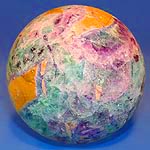
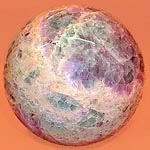
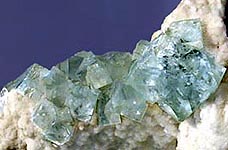



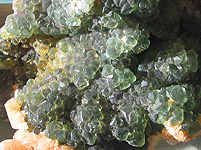

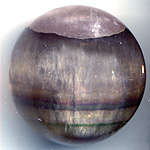
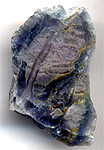


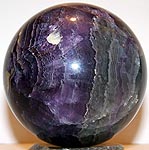
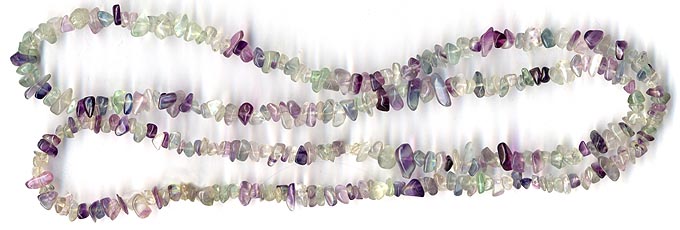
Toxic and hazardous radioactive rocks and minerals
** - Poisonous stones and minerals (obligatory check in chemical laboratory + clear indication of toxicity).
** - Radioactive rocks and minerals (obligatory check on a regular dosimeter + ban on the open sale of radioactivity in the event of more than 24 mR / hour + additional measures to protect the population).
All rare stones should always be checked on a regular dosimeter on the permissible level of radiation and a chemical laboratory in the absence of toxic and volatile components which are hazardous to humans and the environment.


Comments
Commenting, keep in mind that the content and the tone of your messages can hurt the feelings of real people, show respect and tolerance to his interlocutors, even if you do not share their opinion, your behavior in terms of freedom of speech and anonymity offered by the Internet, is changing not only virtual, but real world. All comments are hidden from the index, spam control.